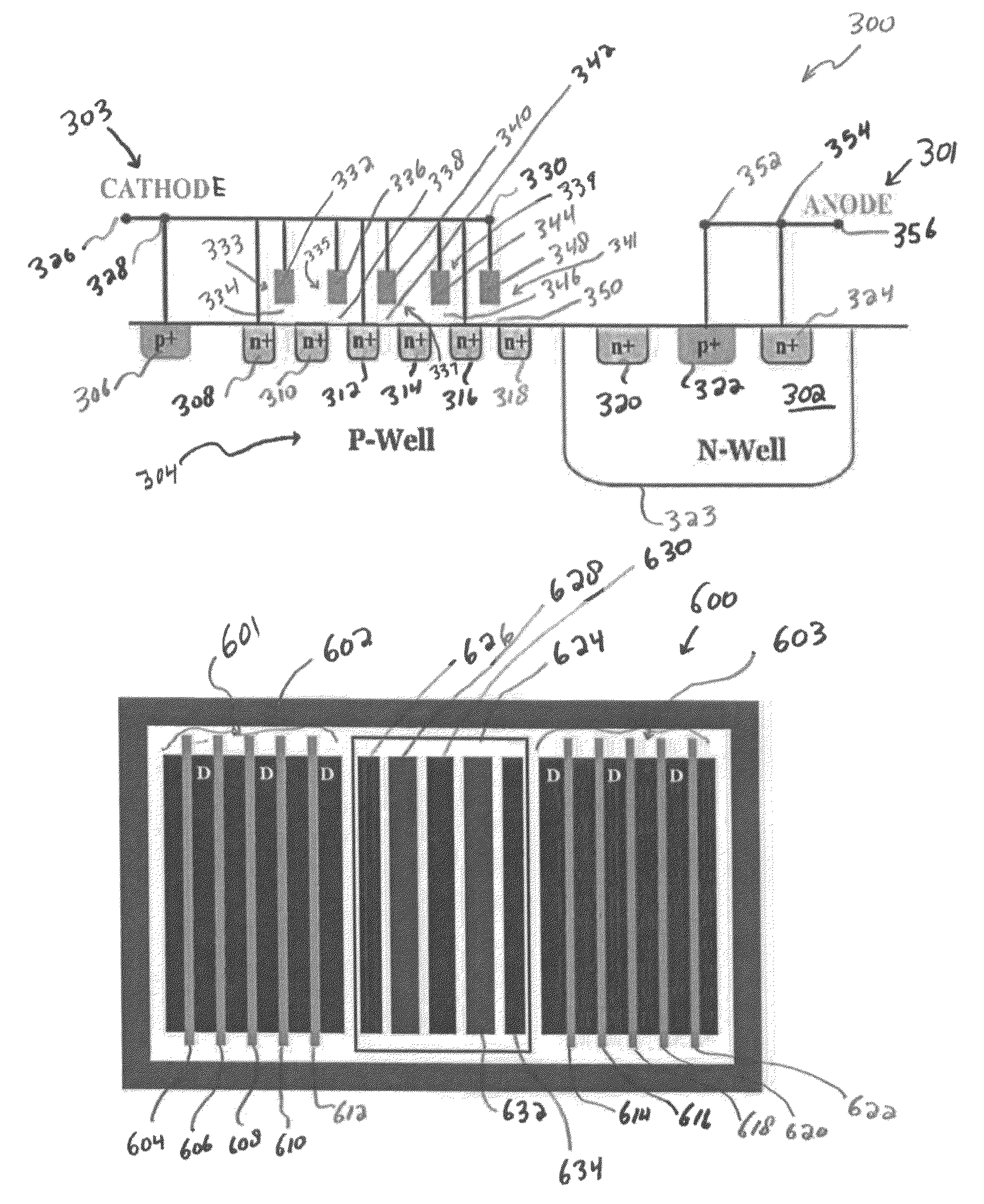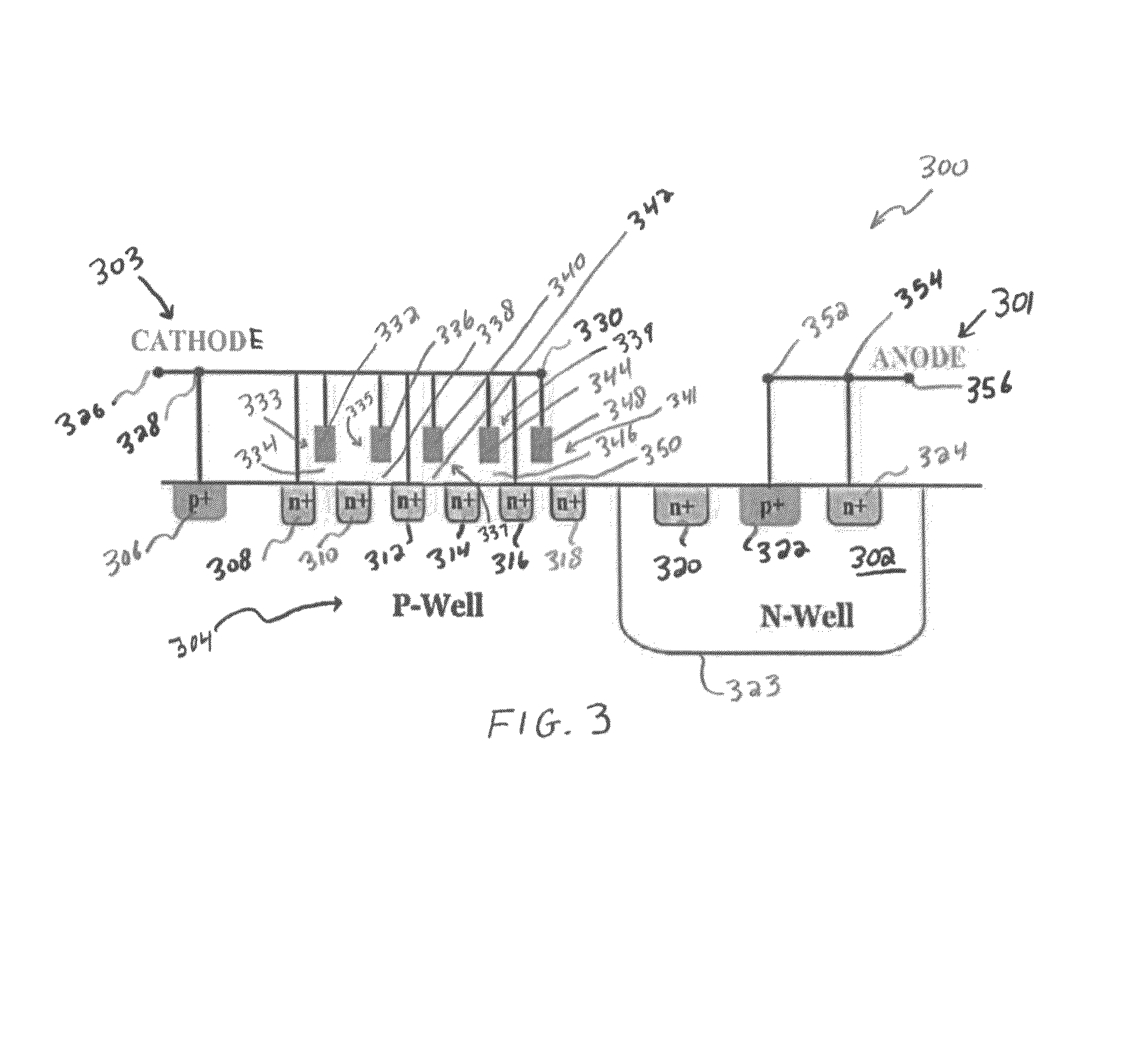Design of silicon-controlled rectifier by considering electrostatic discharge robustness in human-body model and charged-device model devices
a technology of electrostatic discharge and rectifier, which is applied in the direction of semiconductor/solid-state device details, diodes, transistors, etc., can solve the problems of ic protection, ic damage or destruction, and product expensive repairs, so as to enhance esd protection capabilities
- Summary
- Abstract
- Description
- Claims
- Application Information
AI Technical Summary
Problems solved by technology
Method used
Image
Examples
Embodiment Construction
[0025]The particular values and configurations discussed in these non-limiting examples can be varied and are cited merely to illustrate embodiments of the present invention and are not intended to limit the scope thereof.
[0026]FIG. 3 illustrates a cross-sectional diagram of a low voltage triggered silicon-controlled rectifier (LVTSCR) apparatus 300 in which a plurality of NMOS fingers 333, 335, 337, 339, and 341 are incorporated therein, in accordance with a preferred embodiment. In order to improve the performance of an LVTSCR without scarifying HBM performance thereof, LVTSCR apparatus 300 can be inserted with multiple NMOS fingers 333, 335, 337, 339, and 341. Such an improvement can be verified, for example, utilizing 0.25 μm technology by utilizing a transmission line pulse generator (TLP). Note that as utilized herein, the acronym NMOS refers generally to “N-Channel Metal Oxide Semiconductor,” which is based on a transistor technology wherein the primary current carriers are n...
PUM
 Login to View More
Login to View More Abstract
Description
Claims
Application Information
 Login to View More
Login to View More - R&D
- Intellectual Property
- Life Sciences
- Materials
- Tech Scout
- Unparalleled Data Quality
- Higher Quality Content
- 60% Fewer Hallucinations
Browse by: Latest US Patents, China's latest patents, Technical Efficacy Thesaurus, Application Domain, Technology Topic, Popular Technical Reports.
© 2025 PatSnap. All rights reserved.Legal|Privacy policy|Modern Slavery Act Transparency Statement|Sitemap|About US| Contact US: help@patsnap.com



